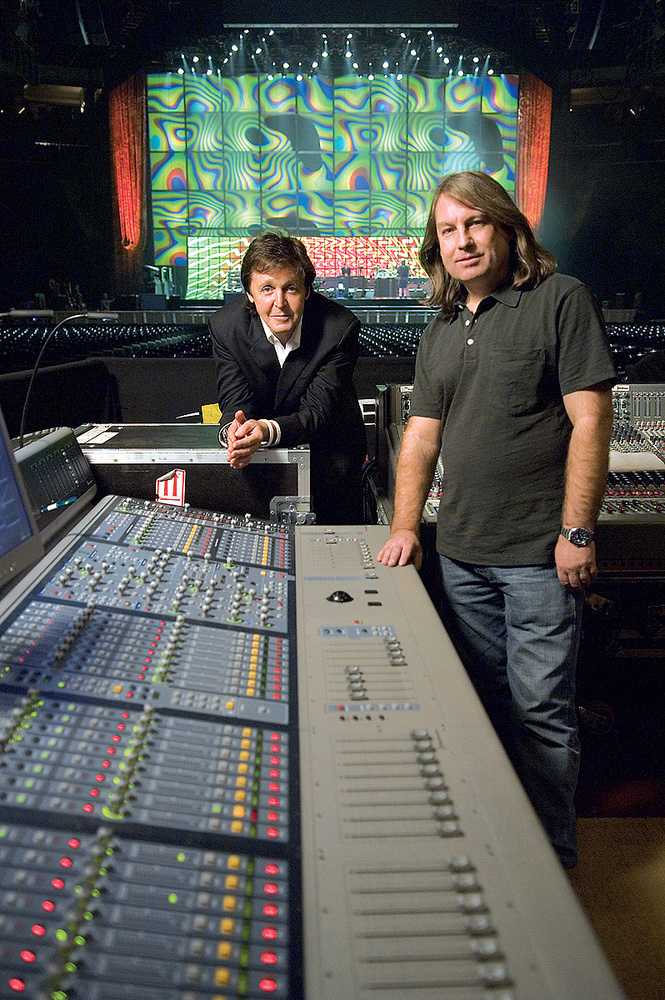
That’s the amount of time you have to tear down all of Band A’s gear and mic up Band B’s gear. Bad Time ManagementĬhangeover can be tight. Proximity effect and phase relationships can ruin a mix and are easily undetected by the untrained ear.
#Mixing live sound how to
Feedback, monitor issues and balance problems will happen if you don’t know how to properly set levels and route signal through the system.Īnother common problem area is miking technique. Without a solid understanding of signal flow and gain structure, you’re asking for a nightmare. If you want to work in live sound you need a thorough understanding of both. I know it’s not as sexy as parallel compression, but gain structure and signal flow are really important. Vocals and other instruments are very easily masked by the low end, so excessive subs can kill a show rather quickly. Don’t be afraid to high-pass channels to clean up the low end or even turn down the amps for the subs to keep the low end in check. Same goes for the bass and basically anything else you’re running through the subs. Loud kick drums are great, but they can’t be the loudest part of your mix. It’s very pleasing to feel the kick in your chest, but you can’t do it at the cost of the vocal or any other instrument. That may sound good in headphones, but people are here for the vocals - so turn them up!Īnother common balance problem is too much kick. At a live show, the vocal is the center of attention.Ī common mistake is to mix all of the instruments evenly. You can hear the instrumental really loud at home. The #1 most important part of the mix, regardless of the genre, is the vocal. Some engineers will make a -12dB cut to clean up the mud in a guitar before they’ll move the mic back a 1/2”. Use your ears and make an assessment on how something sounds before you grab a knob to fix it.ĭon’t be afraid to move a microphone either. Would you make a -9dB cut at 250Hz if you weren’t looking? Or would it be 13.7dB at 237Hz?ĭon’t flatten out the house EQ because it doesn’t notch out your least favorite frequency.

Stop looking at the screen and doing what you think you’re supposed to do instead of what sounds good. The graphic on the screen is there to guide you, not make decisions for you. This is usually a problem for people who mix on digital desks or in the box. You need to react to their song: pull up the guitar during a solo, mute the FX during talk sets and for God’s sake - pay attention !ĭon’t be that engineer who forgets to un-mute the bassist’s mic until halfway through the third verse when you see them flailing their arms on stage after noticing the awkwardly long instrument bridge… 3. You can’t assume your presets are going to work every night because you don’t know how the room is going to sound.Įven after you’ve got everything sounding perfect, you should still have eyes on the band. The equipment on stage, the placement of the mics and even the temperature of the room that day can affect the way a show sounds. Under-Mixingĭigital consoles are great because they allow you save presets of your favorite settings, but that’s no excuse to get lazy. It’s going to cause more problems than it’s going to prevent. There’s no reason to gate the guitars or the vocals. Their main purpose is to reduce drum bleed.

Sure, there are plenty of excuses to compress the kick and snare, but the cymbals? The mandolin? Just because you have it doesn’t mean you should use it. Focus on creating consistent dynamics instead of adding punch. The lead vocals should be the center of your attention. Sure, it’s fun to roll off some of the top-end on your hall reverb, but don’t let that distract you from the things that actually need attention.Ĭompression should be used sparingly. Live sound is largely correcting problems with subtractive EQ. If you’re not comfortable with the console, you might just freeze up from analysis paralysis, but if you know your way around the board, it’s really easy to get carried away with virtually unlimited processing.ĭon’t go crazy with the EQ. They usually offer 3-5 bands of fully parametric EQ, compression and gates for every channel, as well as multiple interchangeable FX sends. They’re compact, flexible and they pack a mean bang-for-the-buck.

These days most venues, churches and production companies are outfitted with digital consoles. Here are the most common and crucial mistakes people make running live sound. Sometimes, it’s no big deal and nobody notices, but occasionally, you ruin a wedding or two. We’ve all made mistakes, whether we’re fresh out of school or fresh off of our 25th tour. There are dozens of channels, sends and settings to keep straight, and if anything does go wrong, all eyes in the room are on you. It’s a combination of art, science and customer service (nobody likes to admit that last part, but it’s true).


 0 kommentar(er)
0 kommentar(er)
